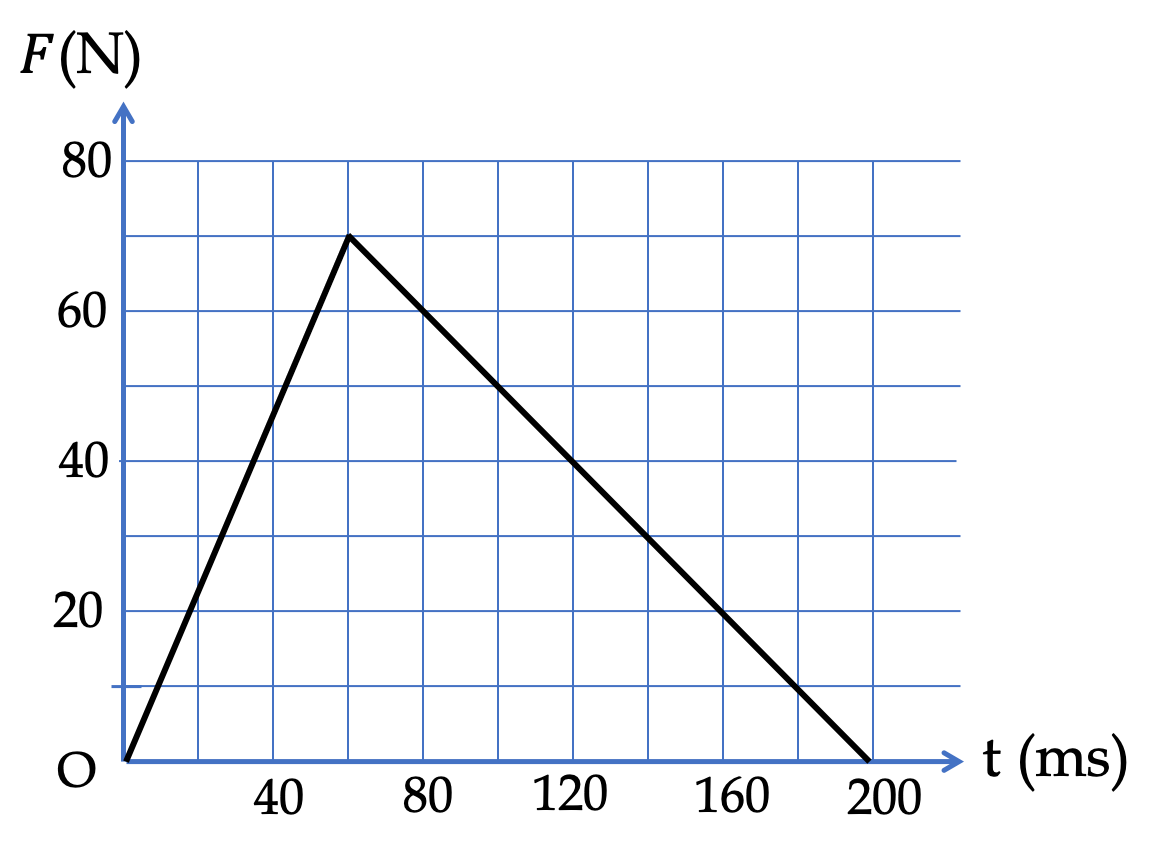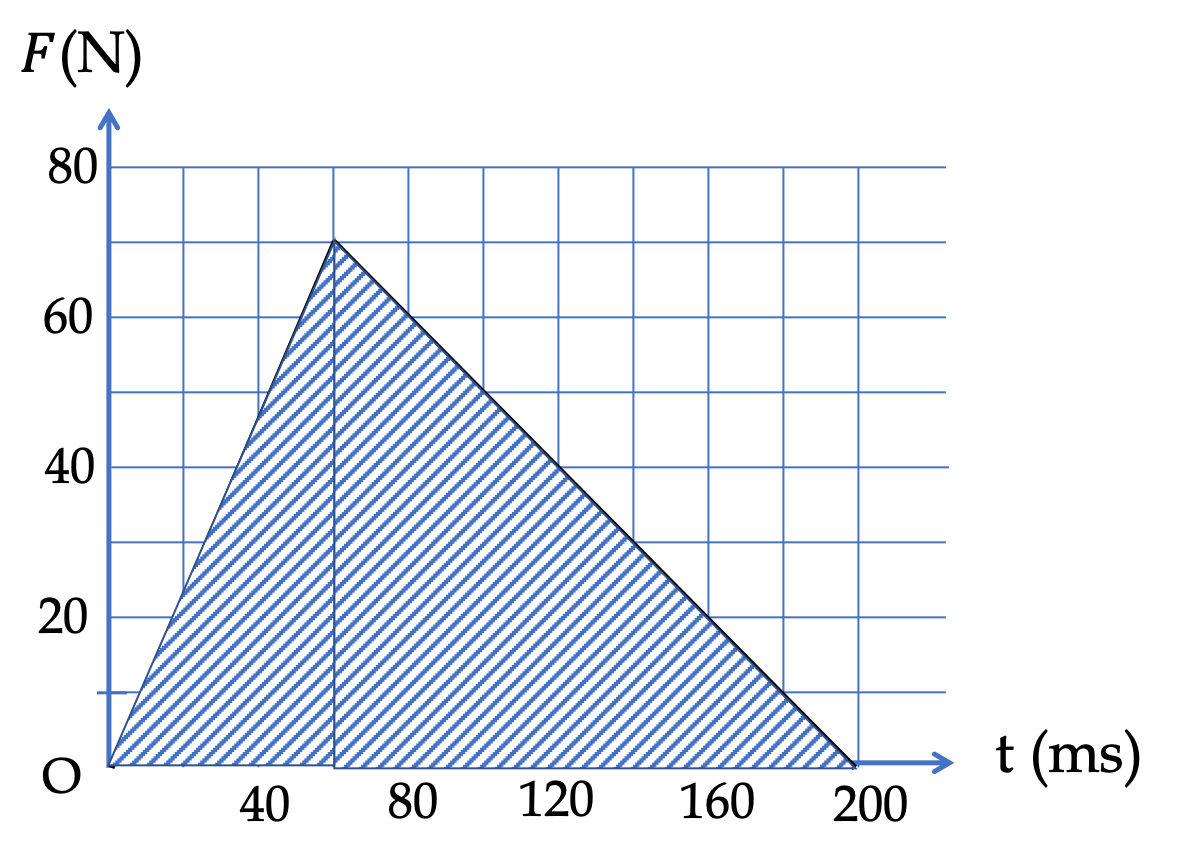Example 7.15. Impulse from the Area under \(F \) versus \(t \).
The impulse of a baseball hit can be well-approximated by a hat-shaped curve as shown in Figure 7.16. The direction of the force during the hit is nearly constant, in the direction from the bat towards the ball. From the given values on the graph find the magnitude of the impulse on the ball.

Answer.
\(7.0\text{ N.s}.\)
Solution.
Since direction of the force does not change, we can take that direction to be direction of positive \(x\) axis. In this case, \(J_y=J_z=0\text{,}\) and magnitude \(J = J_x\text{.}\)
Therefore, we can compute the magnitude of impulse from the area under the curve of magnitude \(F\) versus \(t\text{.}\) The area is area of triangle, whose formula is
\begin{equation*}
A = \dfrac{1}{2}\times \text{ base }\times \text{height}.
\end{equation*}

We also notice that the unit of time is in milli-sec, which we will express in seconds. Therefore, we get
\begin{equation*}
J = \dfrac{1}{2}\times 70\text{ N}\times 200\times 10^{-3}\text{ s} = 7.0\text{ N.s}.
\end{equation*}










